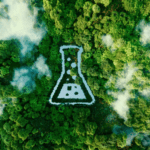Contents by Eurofins SL&TH Regulatory Services Team
Europe
Amendment to Annex IV and V on Persistent Organic Pollutants Regulation
On 12th November 2022, the European Commission published Regulation (EU) 2022/2400 of the European Parliament and of the Council of 23 November 2022 amending Annexes IV and V to Regulation (EU) 2019/1021 on Persistent Organic Pollutants.
The main points covered in the amendments are as follows:
- The insertion of the Article 21a related to the transitional provision of polychlorinated dibenzo-p-dioxins and dibenzofurans (PCDD/PCDF) and dioxin-like polychlorinated biphenyl (dl-PCBs).
- The addition of the following substance in the Annex IV to Regulation (EU) 2019/1021: Dicofol, Perfluorooctanoic acid (PFOA), its salts and PFOA-related compounds, as set out in Annex I and Perfluorohexane sulfonic acid (PFHxS), its salts and PFHxS-related compounds.
- Replacement of the following rows in the Annex IV to Regulation (EU) 2019/1021:
- Alkanes C10-C13, chloro (short-chain chlorinated paraffins) (SCCPs)
- Tetrabromodiphenyl ether C12H6Br4O, Pentabromodiphenyl ether C12H5Br5O, Hexabromodiphenyl ether C12H4Br6O, Heptabromodiphenyl ether C12H3Br7O and Decabromodiphenyl ether C12Br10O
- Polychlorinated dibenzo-p-dioxins and dibenzofurans (PCDD/PCDF)
- Hexabromocyclododecane
- Several amendments to Part 2 of Annex V to Regulation (EU) 2019/1021.
On 22nd December 2022, the corrigendum to Regulation (EU) 2022/2400 was published.
Amendment to Persistent Organic Pollutants Regulation
On 6th December 2022, the Persistent Organic Pollutants (Amendment) (EU Exit) Regulations 2022 (S.I. 2022/1293) which amends Regulation (EU) 2019/1021 on persistent organic pollutants was published.
The main points covered in this amendment are as follows:
- Addition of point 3 to the entry related to bis (pentabromophenyl) ether (decabromodiphenyl ether; decaBDE) in Annex I, Part A which allows for the use of decaBDE in aircraft, motor vehicles and electric and electronic equipment.
- Corrigendum to the entry related to perfluorooctane sulfonic acid and its derivatives (PFOS) C8F17SO2X and perfluorooctane sulfonic acid and its derivatives (PFOS) C8F17SO2X in Part A of Annex 1 to the EU Regulation which confers functions on EU entities which no longer have functions in the United Kingdom.
EU Strategy for Sustainable and Circular Textiles
On 22nd November 2022, The European Commission published the opinion of the European Economic and Social Committee on communication from the Commission to the European Parliament, the Council, the European Economic and Social Committee and the Committee of the Regions on the EU Strategy for Sustainable and Circular Textiles (COM(2022) 141 final).
The main points to consider are:
- Competitivity aspects
- Sustainability, circularity and transition to a green economy
- Consumers and digitalisation
- Education and working conditions
- Funding and investments
The aim of the textile strategy is to facilitate a circular and digital transition with appropriate and flexible measures that address industry needs. Creativity and sustainable innovation must be an integral part of this strategy in order to develop a circular economy and minimise the environmental impact of the textile sector.
France
Roadmap for managing textile waste 2023-2028
On 28th September 2022, the Ministry of the Ecological Transition published the 2023-2028 roadmap for the management of textile waste. The main aims of the roadmap are:
- To provide incentives for products that are designed to be more sustainable, more environmentally friendly, and remanufactured from recycled textiles;
- Reduce the cost of repairing textiles so they last longer;
- Develop new solutions for collecting used textiles, particularly in small towns and rural areas, to give them a second life;
- Fund the sorting and repair of textiles to give them a second life;
- Encourage the consistent recycling of non-reusable textiles in France to remanufacture textiles without depleting resources, through established processes.
The idea is that new specifications will be presented and implemented from 2023 for a period of six years, once the roadmap is approved.
Specifications for eco-organisations and individual systems in the textile sector
On 25th November 2022, The Minister for Ecological Transition and Territorial Cohesion published Order of 23rd November 2022 laying down specifications for eco-organisations and individual systems in the extended sector of textile, footwear and household linen (TLC) production.
This order defines specifications for eco-organisations, and how they must contribute to or provide for the reuse, repair, recycling and treatment of waste from textiles, shoes and household linen (TLC) as mentioned in 11° of the article L.541-10-1 of the environment code. It also defines the specifications for the individual systems put in place, where applicable, by producers to individually fulfill their extended responsibilities and obligations.
The decree comes into force on January 1st, 2023.
UK
Overall recycling aims for packaging in 2023
On 23rd November 2022, the Statutory Instruments 2022 No. 1222 The Producer Responsibility Obligations (Packaging Waste) (Amendment) (England and Wales) Regulations 2022 was published.
This Regulation set an overall recycling target as well as material-specific recycling targets for 2023 on obligated producers in England and Wales in relation to glass, plastic, aluminium, steel, paper/board and wood.
This Regulation amends the Producer Responsibility Obligations (Packaging Waste) Regulations 2007 (S.I. 2007/871). It came into force on 1st January 2023.




